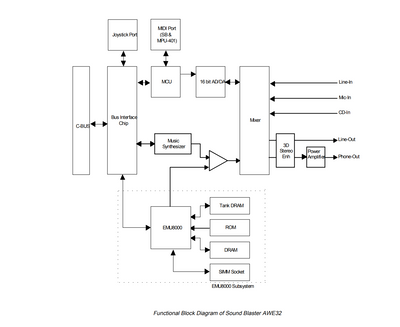First post, by BEEN_Nath_58
I am an audio amateur so I wish to learn. According to Wikipedia on AWE32:
The Sound Blaster AWE32 included two distinct audio sections; one being the Creative digital audio section with their audio codec and optional CSP/ASP chip socket, and the second being the E-mu MIDI synthesizer section. The synthesizer section consisted of the EMU8000 synthesizer and effects processor chip,...
This explains that the EMU8K is responsible for MIDI synthesis, while the normal audio processing was in the digital audio section. But---
Sound Blaster Live! (August 1998) saw the introduction of the EMU10K1 audio processor.
By this line I get that the EMU10K1 is a DSP doing all kinds of sound processing (leaving the FX8... chip for effects).
By this point I am confident I misunderstood things. They lead me to questions:
1) How did the EMU evolve to become an entire DSP?
2) What's the DSP chip for AWE32?
...
Please start explaining amd corrections...
Thank you
previously known as Discrete_BOB_058
